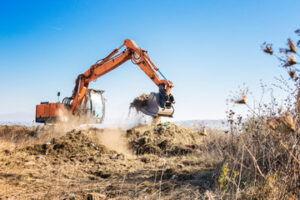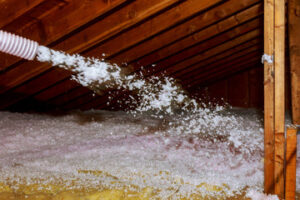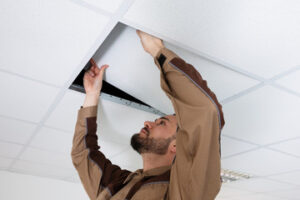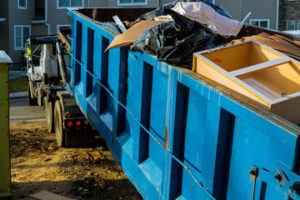Austin Brush Removal includes a variety of tasks such as trimming tree limbs and undergrowth. It may also include invasive plants, like poison ivy and kudzu, or overgrown grasses, shrubs and vines.

Regularly clearing brush prevents overgrowth, which can choke out desirable plants, reduce sunlight and air circulation, and create fire hazards. A well-maintained landscape not only boosts the value of a home, but it’s also safer for families to play and walk in.
As its name suggests, brush removal is the act of eliminating unwanted plant growth. It is an essential aspect of land maintenance as it improves yard health, reduces fire hazards, and allows for other landscaping projects. It can be performed manually using hand tools or with heavy machinery, depending on the size and type of vegetation.
For smaller, tame landscapes, manual brush clearing is simple and quick. It involves using hand tools like loppers, pruning shears, or a chainsaw to cut down and uproot small trees and shrubs. This method can also be used to trim grass and small weeds. For larger areas with thicker plants, mechanical brush clearing is more efficient. For example, mowers or brush cutters are ideal for tackling overgrowth and can be used in conjunction with a mulcher. This helps to conserve woody debris, which can be used as compost.
In addition to reducing fire risks, brush removal is also a good way to control invasive species and prevent unwanted flora from taking over. The best time to perform this task is in the winter, when the weather is colder and more favorable to working outdoors. It’s less likely to encounter snakes or pests, and it is easier to prune and rake.
During the brush clearing process, the first step is to inspect your property and identify the type of overgrowth that needs to be addressed. For instance, you might have a dense patch of kudzu or a clump of poison ivy that are crowding out desirable species. Once you know what you’re dealing with, it will be much easier to come up with a plan of attack.
Once you’ve identified the type of overgrowth, it’s important to map out your site and note the locations of trees, bushes, and shrubs that need to be removed. This will help you plan the most effective route and determine which equipment or methods to use. It’s also a good idea to write down any specific challenges that may arise such as difficult terrain, swampy areas, or areas that are prone to erosion.
Preparation for Construction
Taking the right steps before construction begins is critical for projects of any size. It helps ensure that construction progress doesn’t halt to deal with soil or environmental issues, and it prevents damage to the surrounding landscape. This preparation phase includes a number of important tasks, like surveying the land, mapping out underground wiring, and ensuring that necessary permits are secured. It also involves securing an area for materials and equipment storage, as well as constructing access roads.
The first step in preparing a building site is to remove all obstructions, including vegetation, trees, and stumps. This process is known as brush clearing, and it can be done with a wide variety of machinery. For example, brush cutters are used for thinner vegetation, while chainsaws are used to clear larger trees and limbs. In some cases, land clearing may also include digging up and disposing of old structures that are no longer in use.
Next, drainage systems are installed to help prevent erosion and redirect water flow away from the property. This is essential for preventing flooding and plumbing issues after the project is completed. It’s also a good idea to install silt fences and retention ponds for construction sites that are located near water sources.
Finally, the soil is graded and compacted to reduce pore space and improve its structural strength. This helps ensure that foundations will be sturdy and durable, even after years of use. It’s also a good time to add some topsoil, as this will promote healthy plant growth and add nutrients to the ground.
Regular brush removal is vital for keeping your landscape beautiful and allowing plants to thrive. Overgrown bushes, vines, and trees not only look unsightly, but they can also block sunlight and limit air circulation. They can even pose fire hazards. Hiring a brush clearing expert can transform your outdoor space into a more serene, enjoyable environment. Plus, a well-maintained yard can increase your property’s value by up to 15%. It’s worth the investment. Contact a brush clearing specialist today to get started! They can provide you with all the tools and expertise you need to make your landscaping vision a reality.
Prevention of Pest Infestations
A pest infestation can be extremely hazardous to people, pets and livestock. It can also cause property damage, resulting in costly repair bills and potential loss of revenue. To reduce the risk of pests, regularly clearing overgrown brush is an effective strategy. Overgrown bushes and weeds are natural breeding grounds for insects, rodents and ticks. The removal of these invasive plants will clear the area for landscaping and prevent pests from hiding in the brush.
In addition to regularly clearing out overgrowth, there are several other steps that can be taken to prevent pest infestations from occurring. Thoroughly inspecting your property and identifying any cracks, gaps or holes that may serve as entry points is essential. Using caulk or weatherstripping to seal these areas will significantly reduce the chances of pests infiltrating your building. It is also important to remove food sources and other attractants that may lure pests to your property. This includes storing all food in airtight containers and sweeping and cleaning surfaces regularly.
Proper waste management procedures are also critical for preventing pests. Flies are attracted to trash bins and dumpsters, where they contaminate products with their urine, feces and saliva. Rodents are another common pest that often make their home in garbage compactors and recycling centers, where they gnaw through electrical wires, gas lines and support beams. By keeping garbage and recycling receptacles tightly sealed and removing them regularly, you can significantly reduce the risk of pest infestations.
It is also essential to ensure that all entry points into your commercial building are blocked, including vents, flues and doors. Using quality door sweeps and window screens is an excellent way to block pests from entering your property. Additionally, insulating and weatherproofing your building is another effective strategy for preventing pests. For instance, blown-in cellulose insulation can be treated with boric acid, which acts as both a fire retardant and an insecticide. This insulation is ideal for sealing gaps and cracks around windows, doors, and vents. It is also available in a variety of thicknesses to provide optimal protection for your building.
Environmentally Friendly
Brush clearing is a sustainable practice that helps protect natural resources and the environment. It also allows for more sunlight and air to reach the soil and surrounding vegetation. This is vital in the prevention of erosion and the reduction of harmful pollutants that enter water bodies. It is a necessary step in land preparation for construction or agricultural projects. Additionally, clearing brush can improve a property’s aesthetics and reduce fire hazards. It can even help control pests, as it eliminates breeding grounds for rodents and other destructive creatures.
Brush removal is the process of removing unwanted vegetation, including weeds, shrubs, trees and vines from an area of land. This often involves pruning, cutting and uprooting the plants. It is done by hand or with specialized equipment. For large areas, a brush clearing contractor may use a tractor with a brush cutter. Smaller areas can be cleared with tools such as shears, loppers and saws. It is an environmentally friendly practice that can also be used to prepare land for reforestation or other landscaping projects.
Clearing brush is essential for many reasons, and can have a variety of benefits to both homeowners and businesses. In addition to reducing the risk of wildfire, brush clearing can promote healthy plant growth, enhance the landscape, and increase property value. However, it is important to approach this task carefully and with the help of a professional.
A brush pile is defined as woody vegetation that covers the ground and includes tree limbs, stumps, dead or nuisance-causing bushes, and vines. In addition, it can include invasive or unwanted live vegetation, such as poison ivy. These invasive and unwanted plants choke out desirable, more valuable vegetation and create safety and health hazards.
The most common method of brush clearing is through manual removal. In this method, workers walk through an area of overgrown vegetation and cut or uproot the plants with a tool such as shears or a saw. While this is an effective method for small to medium-sized areas, it requires a lot of physical labor and can be time-consuming. In addition, it is not practical in large areas. Another option is to rent a dumpster and haul the brush away for recycling or disposal. Some companies offer services to chip and mulch the brush, which reduces waste and provides a natural source of nutrients for other plantings.








